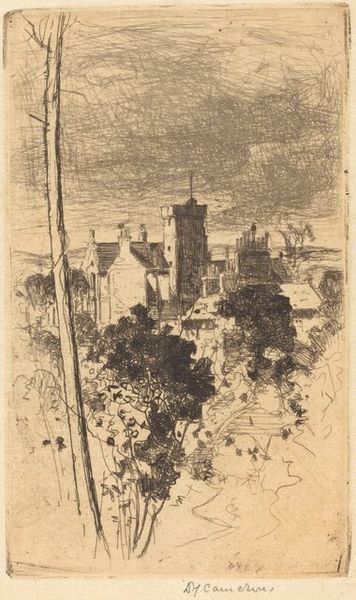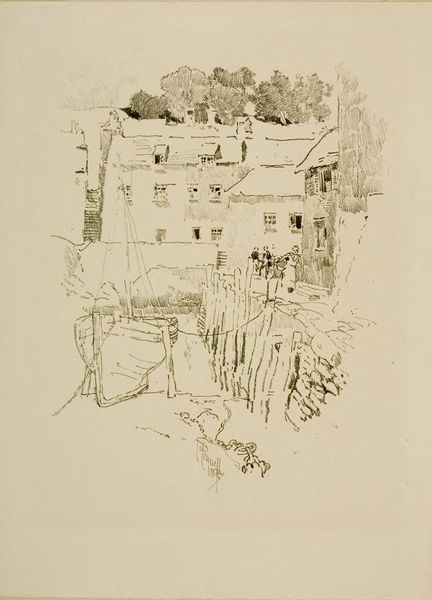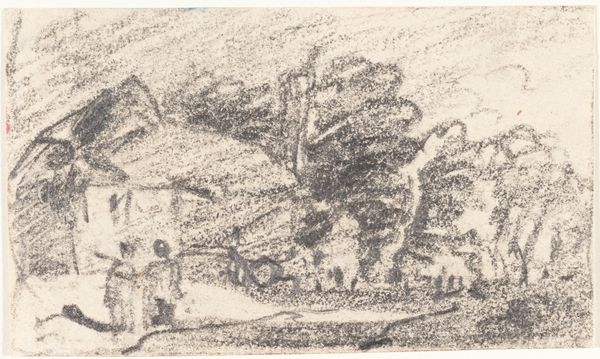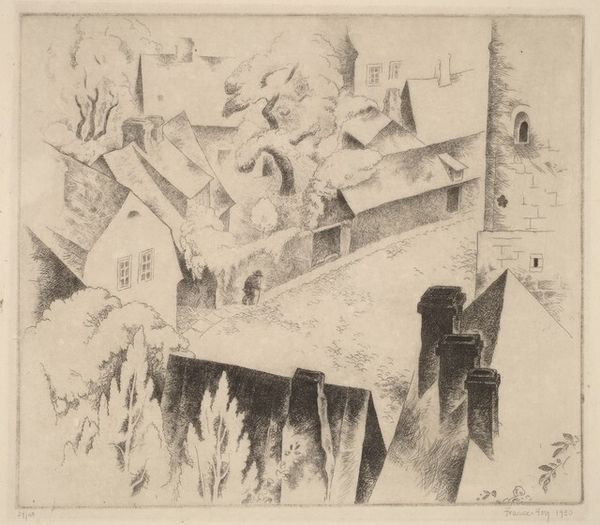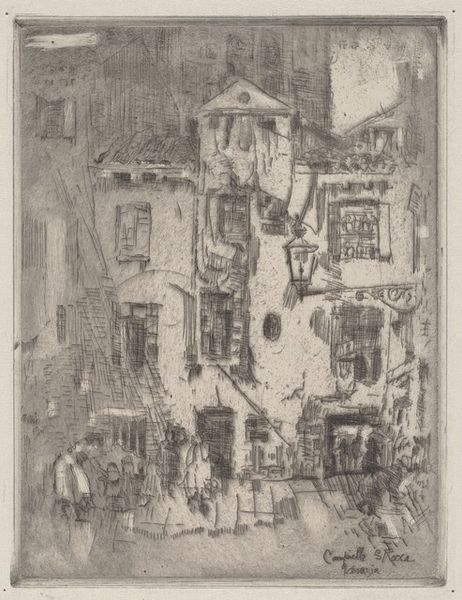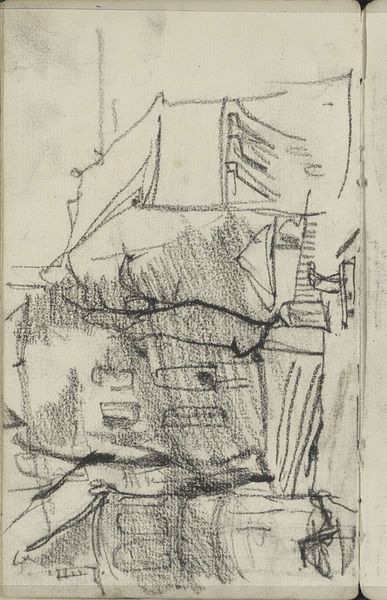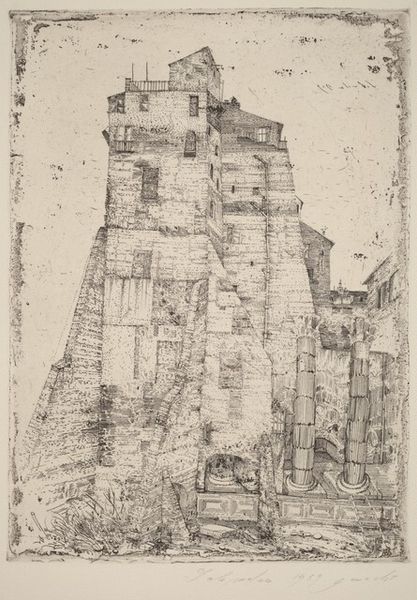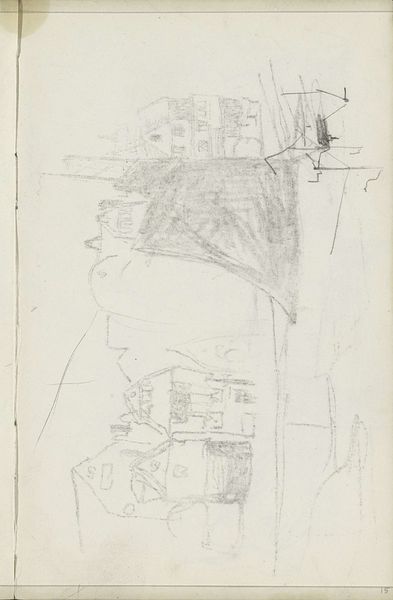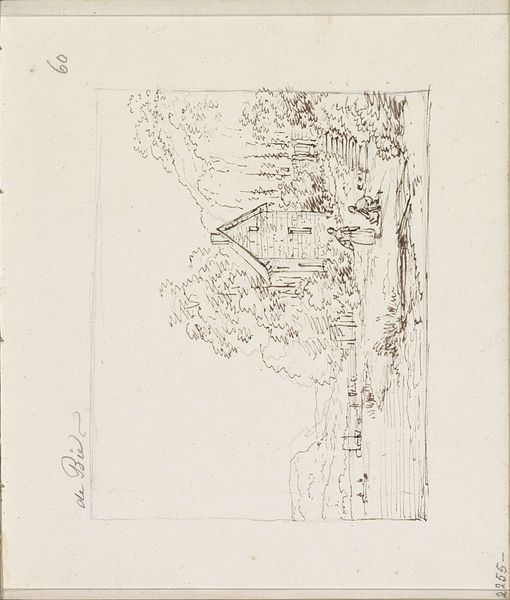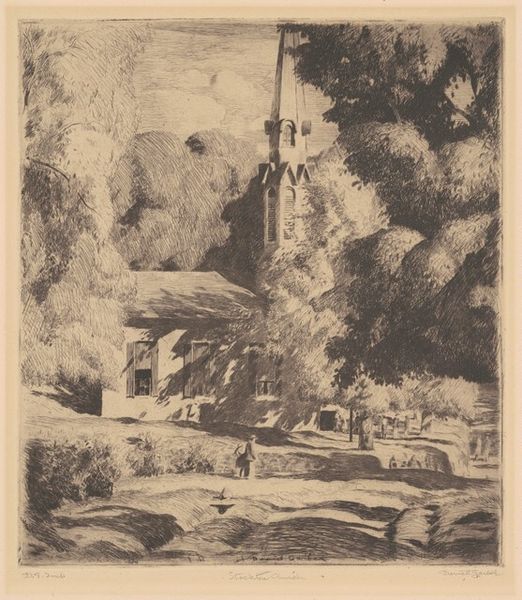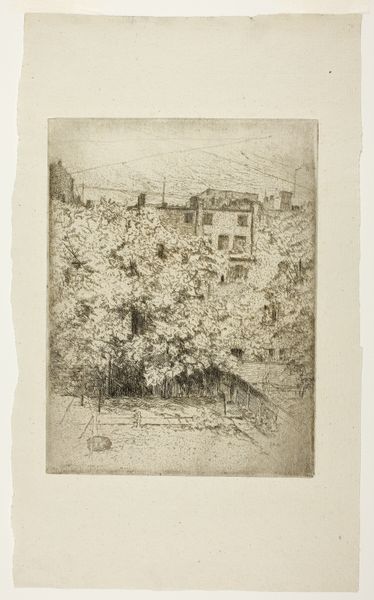
drawing, print, etching, ink
#
drawing
# print
#
etching
#
arts-&-crafts-movement
#
landscape
#
etching
#
ink
Dimensions: plate: 10.6 x 6.4 cm (4 3/16 x 2 1/2 in.)
Copyright: National Gallery of Art: CC0 1.0
Editor: Here we have "Barochan, No.1," an etching made with ink on paper by David Young Cameron in 1892. The landscape, though small, feels grand, and it strikes me as a somewhat romantic depiction. What stands out to you as you examine the art piece? Curator: What jumps out is the tension between the intended aesthetic and the reality of its making. Cameron aligns with the Arts and Crafts Movement by choosing printmaking, valuing process and honest labor, contrasting the elitism often associated with fine art. The emphasis isn't merely the depiction of Barochan, but the materiality of the print itself: the biting of the acid, the wiping of the plate, the pressure on the paper. Look closely; can you see the texture resulting from the process? Editor: I think I see what you mean – almost a rough, handcrafted feel despite the detailed rendering. The texture of the paper itself becomes part of the art. How might the choice of etching contribute to the work’s overall message or effect? Curator: The deliberate embrace of craft, and the visibility of that process in the final print, are powerful statements. It moves beyond simple representation. We see labor, we see deliberate marks—we consider how materials transform under skilled hands. Doesn't that resonate with the Arts and Crafts philosophy which rebelled against industrial mass production? Editor: Definitely. I'm beginning to see the landscape not just as a subject, but as a product deeply connected to its method of production, reflecting the values of its time. I appreciate the added perspective, revealing layers beyond the picturesque scenery! Curator: Exactly! It reminds us that every artwork is embedded within a system of materials, labor, and social values. It challenges us to look beyond the surface beauty to understand the underlying forces that shaped its creation and meaning.
Comments
No comments
Be the first to comment and join the conversation on the ultimate creative platform.
